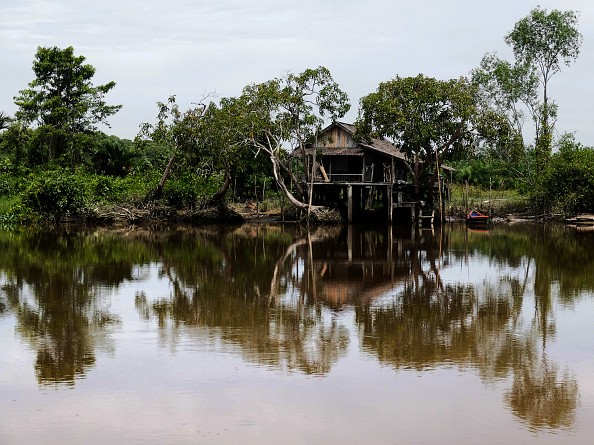Nottingham Trent University environmental scientists have mapped the extent of known wind farm infrastructures, such as wind turbines and vehicle tracks, on recognized blanket bogs in Europe for the first time.
Blanket bogs, a rare type of peatland found in areas with a lot of rain and low temperatures, are typically found on hill summits with higher wind energy potential, making them appealing sites for wind farm developments.
They provide a variety of beneficial ecosystem services, including improved water quality, water storage, and biodiversity. However, according to EU Habitats Directive reports, a large proportion of blanket bogs are already in poor condition.
'Urgent' Need To Understand Impact Of Wind Farms On Precious Peatlands
 (Photo : BAY ISMOYO/AFP via Getty Images)
(Photo : BAY ISMOYO/AFP via Getty Images)

The study, published in Scientific Reports, discovered over 640 wind turbines on blanket bogs across the European Union and the United Kingdom, as well as over 250 kilometers of vehicle access tracks.
Peatlands are the Earth's largest terrestrial carbon store and, when in good condition or restored, act as a natural carbon sink, aiding in climate change mitigation. Peatlands account for more than a quarter of all terrestrial carbon despite covering less than 3% of the planet's land surface.
For centuries, blanket bogs have been threatened by anthropogenic pressures such as peat extraction for fuel and horticulture, forestry, overgrazing, drainage, recreational burning, and human infrastructures.
Wind farm developments pose a modern threat to these ecosystems, particularly to peatland hydrology, ground-level climatic conditions, habitat biodiversity, and carbon storage.
While promoting renewable energy is a priority, Nottingham Trent University researchers argue that establishing wind farms on peatland in pursuit of greener energy may actually be undermining the green energy transition.
The research looked at the extent of wind farm development on blanket bogs, which are protected under the EU's Habitats Directive. This directive protects a diverse range of rare, threatened, or endemic animal and plant species.
Each member state is required by this Directive to report the conservation status of this habitat every six years and to encourage and implement restoration actions to improve quality and conservation status as needed.
"Our study reports for the first time the current known extent of wind farm developments on blanket bogs across the EU and UK," said lead researcher Dr. Guaduneth Chico of Nottingham Trent University's School of Animal, Rural, and Environmental Sciences, as per Phys.org.
The potential long-term damage to this habitat is still unknown, but evidence suggests that wind farm developments have a negative impact on this critical habitat.
Blanket bogs are a particularly vulnerable habitat, and research into them should be prioritized with the goal of protecting and restoring them by reviewing national inventories of this habitat throughout Europe.
How LIFE is protecting Europe's degraded peatlands
Peatland restoration and management improves water retention and quality, stores carbon, reduces greenhouse gas emissions and boosts biodiversity. LIFE has been working on this since 1992.
Many rare and threatened species can only be found in peatlands. They aid in climate regulation by storing carbon.
They can also help to reduce flooding and act as a pollution buffer. However, peatlands are rapidly disappearing and require our assistance.
The European Union's Habitats Directive and the Natura 2000 network of protected areas are critical to the preservation of Europe's peatlands.
This Directive already protects 33 000 km2 of peatlands across 8 700 Natura 2000 sites. Furthermore, the European Commission's EU Biodiversity Strategy for 2030 calls for the restoration and strict protection of peatlands.
This is critical because only 10% of Europe's peatlands are in good condition right now.
Some large-scale LIFE peatland restoration projects have had significant positive impacts on both climate and biodiversity in recent years.
The new LIFE program (2021-2027) encourages projects that aim to restore and preserve peatlands both within and outside the Natura 2000 network.
This includes severely degraded peatlands caused by agricultural and forestry practices, as well as industrial peat extraction.
LIFE's experience in developing sophisticated monitoring systems provides an excellent opportunity for organizations of all sizes to apply for LIFE funding.
Related article: As Peatlands Thaw, Two Gases Much Worse Than Carbon Are Being Unchained
© 2024 NatureWorldNews.com All rights reserved. Do not reproduce without permission.

![Climate Change is Reducing Dust Levels Worldwide as Arctic Temperature Warms [Study]](https://1471793142.rsc.cdn77.org/data/thumbs/full/70320/280/157/50/40/climate-change-is-reducing-dust-levels-worldwide-as-arctic-temperature-warms-study.jpg)



